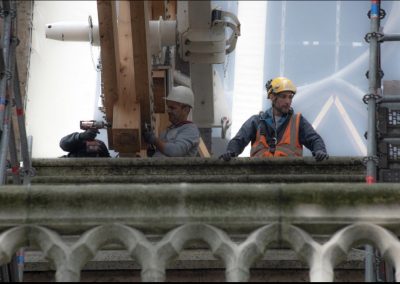20:20 — 20 Questions, 20 Answers
In part 41 of our continuing Q&A series,
Steven Spencer —harp player and world-traveling gypsy photographer—
joins us to talk about partying with Townes Van Zandt and John Prine behind the Armadillo World Headquarters in Austin, sleeping in his truck at Standing Rock during the pipeline protests, searching out a ballet school in Cambodia, and much more—including of course, chronicling it all from behind the lens of a camera.
With his charismatic charm and ever-present cameras, Steven has found his way through doors that would be closed to most of us. He has developed his own unique artistry, opting for low light and often shooting from hip perspective. Steven possesses a special fearlessness. His tenacity, dedication, and perseverance shine in every project he undertakes. Indeed, Steven’s success can be attributed to the fact that he is willing to face great odds and overcome any obstacle to make something happen—and not only in art. His life is evidence of this truth.
Welcome, Steven, and thank you for joining us.
~ Bambi Grinder, NoteWorthy Music
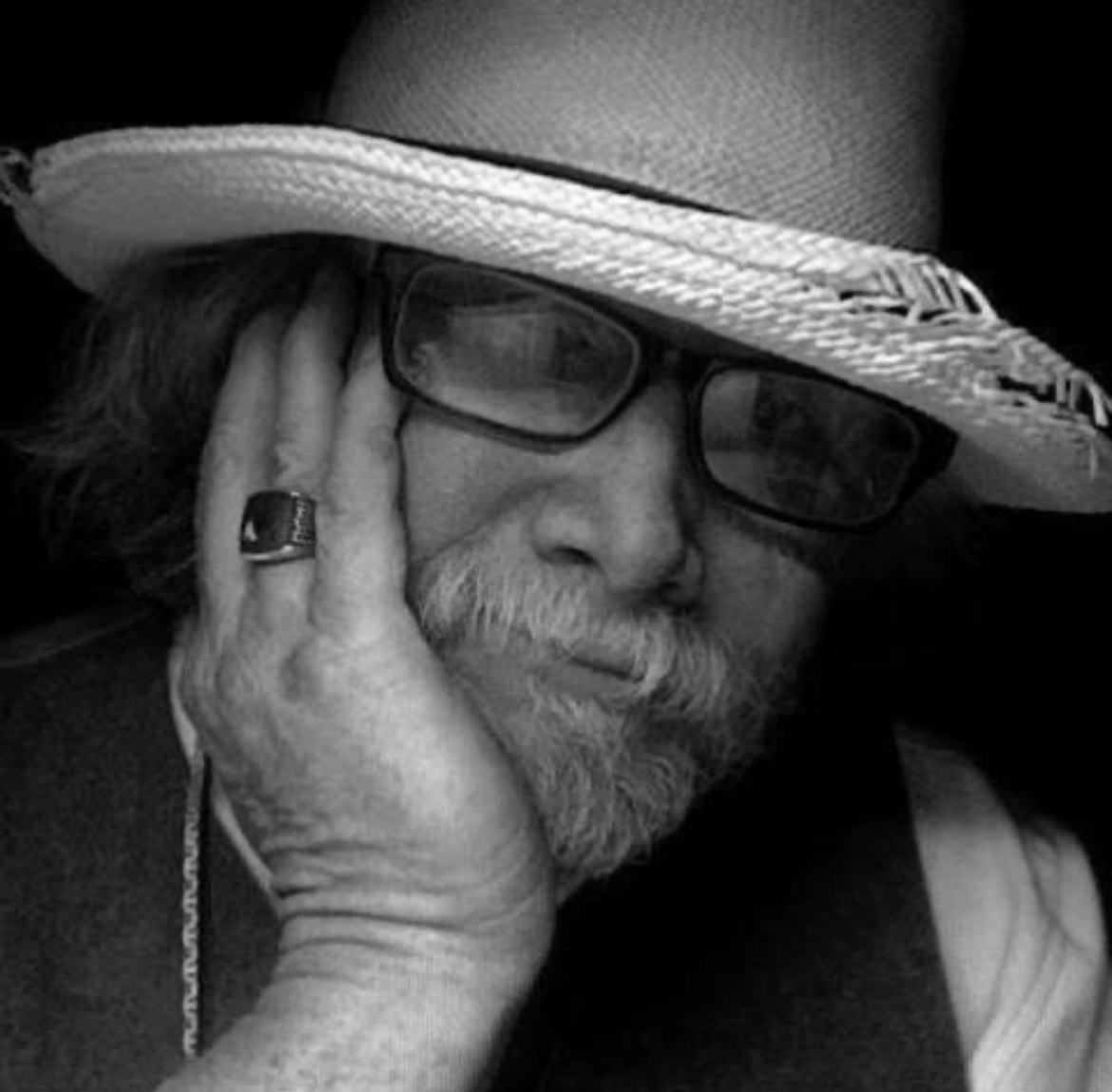
20:20 with Steven Spencer
NWM 1: Please introduce yourself, briefly, as a photographer, musician, and human of Earth.
Steven: Hello, I am Steven Spencer. I first picked up a camera in high school back in 1972, and I carried it with me throughout the 80s. My content was nothing great, just my friends partying and getting high. I pretty much set the camera down in the early 90s to recover from my own addictions, and I didn’t pick it back up ’til the early 2000s.
In 2006, I had an opportunity to return to college with the Retraining for Disabled Veterans program. At the age of 51, I received a Bachelor of Design Arts, a Bachelor of Fine Arts, and an Associate in Visual Arts. This is where my photography turned into an art form.
NWM 2: Who was your biggest influence and how did you get started as a world-traveling gypsy photographer?
Steven: I guess my biggest influence was me. I had no knowledge of any other photographers except Ansel Adams—and little at that. I was told that having no previous knowledge of other styles and techniques was a good thing and that it helped to develop my own, so that I did.
I would leave Springfield out of boredom and push myself to find different subjects—like spending a month in Detroit for a project for my masters degree. It would literally blow me away, and I would say to myself: ‘How can I ever top this shoot?’ But I would.
A friend here in Springfield dubbed me a gypsy photographer. And then, people around the world—when I told them just what I was doing—would say ‘You’re a gypsy photographer,’ and it stuck. Let’s just say I’ve been called worse. So it’s a step up, and I don’t mind it at all.
I had no knowledge of any other photographers except Ansel Adams—and little at that.
NWM 3: Name three things that make you smile.
Steven: Things that make me smile? That’s a hard one! I guess 1) would be seeing someone else smile. Might be strange but it’s true! 2) Good food, doesn’t have to be anything special, just good. 3) Sharing that meal with someone who can’t grow a better mustache than me.

NWM 4: What is your favorite photograph you have taken? Please tell us what makes it special. If that is an (understandably) impossible question to answer, share about a favorite photo journey or series of yours.
Steven: I was in St. Louis in the early 90s sobering up—and I have this thing with low light photography—as I walked down Euclid Street one night, I photographed a sidewalk with the streetlights on, and it turned out! Mind you: I was still using film. I still have that image framed and use it as a gauge to keep track of where I have come from.
NWM 5: You play harmonica in a band called The Ozark Sheiks. Tell us about harp players who have influenced you and what led you to this instrument.
Steven: I play harmonica in a kickass band called The Ozark Sheiks. Unlike photography, I have had a lot of influences—Little Walter, Howlin’ Wolf, Magic Dick, Rod Piazza, Sonny Boy Williamson, and the list goes on and on and on. And also unlike photography, I copied everyone’s style.
I play harmonica in a kickass band called The Ozark Sheiks.
It wasn’t until I joined up with the Sheiks that I found my voice! I have my own sound, and so does the band. It really is a unique band. We don’t really hang out, and we never practice. The guitar player [Blaine Whisenhunt] writes the songs and the music. I find the gigs and find out if everyone can make it. We meet that night and set up, and Blaine says, ‘I’ve got some new songs.’ I ask him what gear [the first one] is in? Then he takes off, and we follow. At the end of the gig, we shake hands and tell everyone just what a great time we had, maybe sit around and catch up, then go home. Who the hell does that and has a great time? I couldn’t ask for a better band!
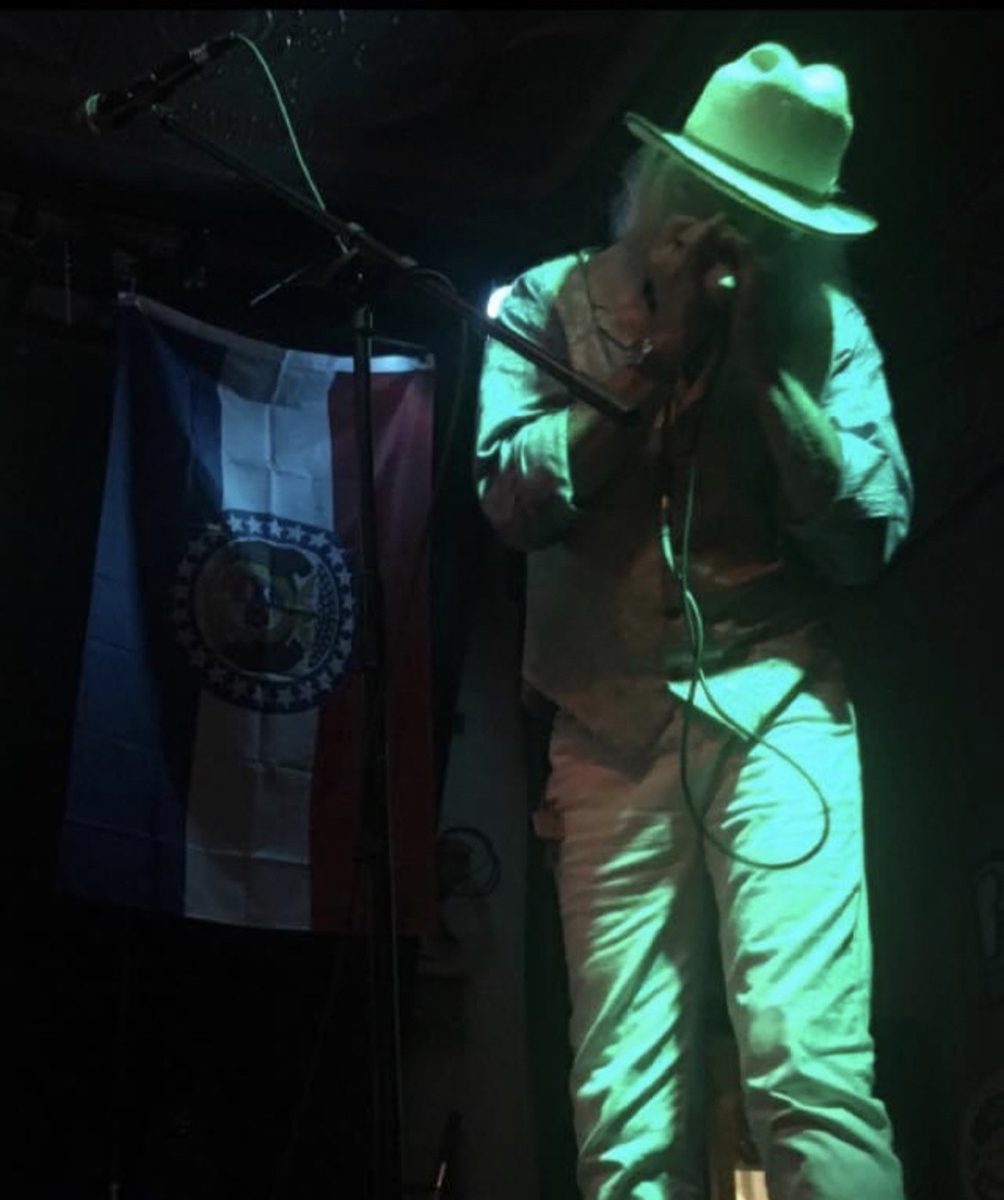
NWM 6: You were involved in a project centered around the dark sky movement, in which you traveled around designated dark sky areas to see how much light pollution you could capture.
Please tell us about dark sky areas, this project to capture light pollution, and its importance to you.
Steven: Yes, it really is an exceptional opportunity for me because I never knew anything about this problem. As I studied up on it, it was extremely obvious to me considering the population. This project is in its beginning stages, and though I am a low-light photographer, shooting the stars is a tad bit more complicated. I have had to do some research on astrophotography, and I am totally amazed by it. The project consists of traveling to and photographing both dark sky areas and larger and smaller size cities to document light pollution.
Though I am a low-light photographer, shooting the stars is a tad bit more complicated.
We first traveled to the center of the Mark Twain Forest which is the darkest spot in Missouri. At 1 a.m., it was pitch black, and I couldn’t see my hand in front of my face, much less my camera. I adjusted my settings before we reached the spot so I wouldn’t be fumbling around. All I could see were stars; it was magical. I couldn’t see the images on my camera. It wasn’t until I returned to camp—that’s when they came to life on my laptop screen. And I was hooked! Next was the Buffalo River in Ponca, Arkansas. The more I learn about this, the more it grabs me. I am just honored to be a part of a worthy project.

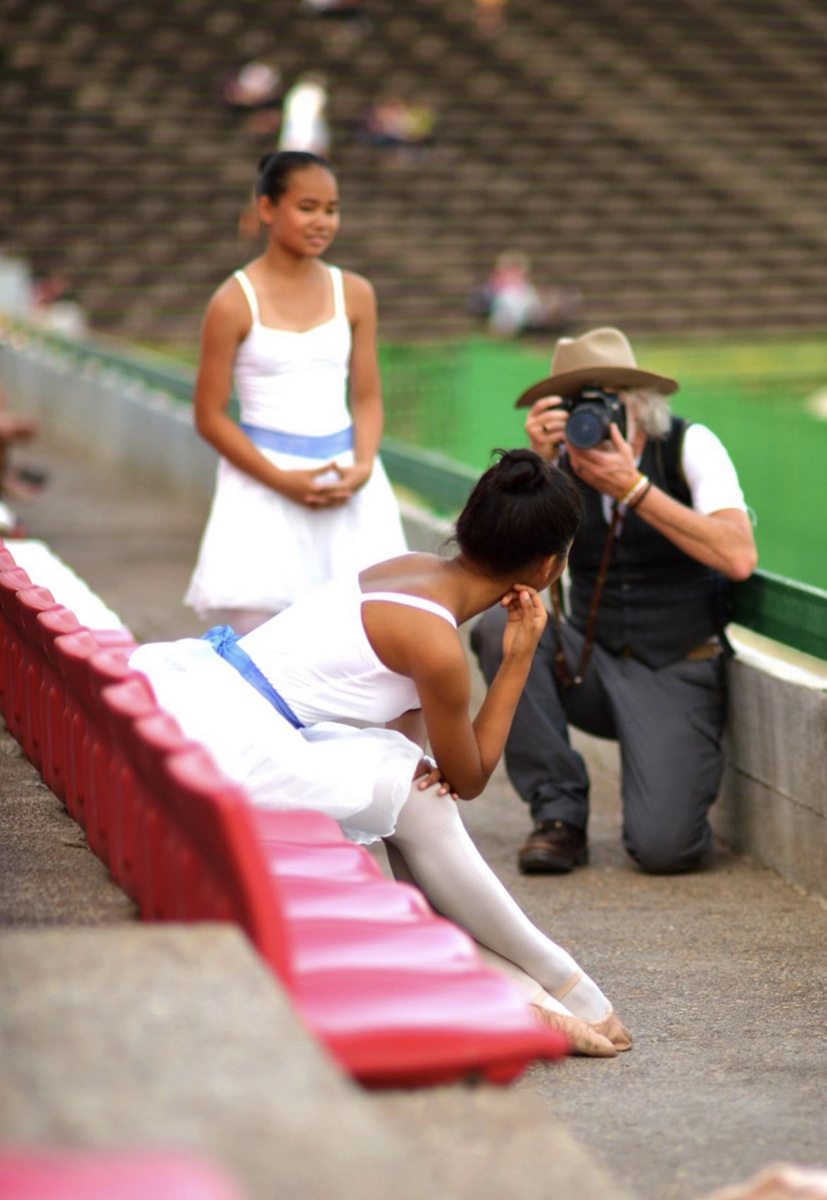
NWM 7: One of your destinations as a world traveler was Cambodia where you photographed the grace and hope and the beauty of student ballerinas contrasted against scenes rich with decades-old stains of their country’s horrific history.
Please share about the program behind those dancers and how you came to capture those stunning images.
Steven: Cambodia was a fluke! I had seen on the internet that Phnom Penh [capital of Cambodia] had a Royal Ballet, and when I arrived I found that it was traditional Cambodia dance and not ballet. There hadn’t been any traditional ballet in Cambodia since the genocide from 1976-1979 when Khmer Rouge killed off 85% of the artists—even though the king was classically trained. This made me search more and more until I found a lead to a ballet studio deep in Phnom Penh. It took me a week to find it, make contact, and get permission to photograph the dancers.
There hadn’t been any traditional ballet in Cambodia since the genocide from 1976-1979 when Khmer Rouge killed off 85% of the artists …
You see, Stephen Bimson—a classically trained dancer from London—stopped in Phnom Penh in 2011 and realized there was no ballet in Cambodia. He opened a studio where no one knew what ballet was and realized he had no students. He then turned to the orphanages—gathering students—and started teaching the children and giving them a chance for a better life. As time went on, he finally had more affluent clients, but still the only people who attended the performances were the people from the orphanage and the parents of the other students. I told Stephen to tell the director of the orphanage and the parents to bring a camera and come along and photograph with me and finally received permission to do this.
These two little girls in white tutus were stars, no one had ever seen anything like it, especially where we were.
We only had six hours on a Sunday to do this as Stephen was going on vacation Monday morning, so we all met at the dance studio at 11 a.m. and got rolling. We tramped through the slums of Phnom Penh. This was an amazing day. One reason was that everywhere we went people were staring at us wondering just what we were up to. These two little girls in white tutus were stars, no one had ever seen anything like it, especially where we were.
By the end of the evening I had caught lightning in a jar. It was amazing. Stephen told me the next day that we just might have made history—that being the first time anybody had seen ballet dancers in Phnom Penh since the genocide.
Ballet Students in Cambodia | Photos by Steven Spencer
NWM 8: We’ve seen several lovely photos from your 2019 trip to Paris. Please share thoughts from that trip and what it meant for you to photograph ‘the city of lights.’
Steven: Paris, what can you say about Paris but wow! I knew I was going to like it, but I didn’t know I was going to love it!
The burning of Notre Dame brought the world to tears. No one could believe it was happening. The news made it sound like it was a total loss and would be torn down. Money from around the world kept pouring in to save it. Architects were submitting alternative designs to at least save part of it short of putting a garden terrace with a Starbucks as a roof. Academics were chattering in academia while historians were chattering about history while politicians were chattering about political moves. And throughout all of this drama, I noticed that no one was talking to the people who were going to pull this feat of reconstruction together—and that was the construction workers themselves.
I noticed that no one was talking to the people who were going to pull this feat of reconstruction [of Notre Dame Cathedral] together—and that was the construction workers themselves.
These are the people who are going to pull this together. You see, once you step foot in Paris, you immediately know that the people of Paris are not going to let anything happen to this cathedral. My main purpose was to find and introduce myself to these workers. Security was extra stiff, and it took me every bit of time I had down to my last week, but I did get to talk to them.
I would be outside the cathedral—rain or shine—trying to make contact with someone. It was impossible; security was so tight! I was down to my last week, when I finally was able to speak to a security guard who told me it was impossible because there were too many secrets.

But he directed me to a door that I stood in front of for a week waiting to find someone to talk to. I was getting ready to ring the bell (which I had never done), and a gentleman opened the door. I asked him if he spoke English. He said, ‘Yes. Do you want me to?’ He directed me where to go, and I got enough information to move forward partially due to an interview with NPR [with Steven, by Jennifer Moore of KSMU—Missouri State’s NPR affiliate] while in Paris.
Sadly, I had to leave with what few images I had, but with enough information to resume once I returned, which I planned to do. Then Covid hit. Hopefully, I will be able to return because I believe it’s a worthy project.
Reconstruction on Notre Dame Cathedral | Photos by Steven Spencer
NWM 9: Please share a unique childhood experience that you feel helped contribute to who you and your art are today.
Steven: I have so many childhood experiences that contributed to who I am and from where my art derives. I believe it started in the 1st grade when my father took me to the local dump, and I saw an old White treadle sewing machine. I begged him to take it home. We fixed it up, and my father started using it. That started me believing that I could do anything. It was amazing; I just exploded. I started drawing superheroes from comic books and won a citywide competition for drawing. In high school, a friend of mine gave me a camera, and I guess the rest is history.

NWM 10: You have photographed a plethora of local, regional, and national artists. Please share some of your most memorable experiences with musicians from your career so far.
Steven: I have that for sure, as my life has been about music since the day I was born. It seems I had a way of getting into music venues while carrying a camera that I couldn’t get into by simply asking to meet the musicians themselves.
Even in my youth, when I found out that this worked, I took advantage of it. There are so many concerts, festivals, house concerts, and campouts. Wherever it was, no matter what type or style it was, I listened and danced to it.
My life has been about music since the day I was born.
I had thousands of photos, mostly color slides and film from 1973-1989, when I lost them in a storage unit that I didn’t keep paid up. Canned Heat, Dylan, every concert I ever attended … Janice Joplin; it’s crazy. I hadn’t really thought about that in a long time.
I was living in Texas in the height of the outlaw music craze. Willie [Nelson] had the Armadillo World Headquarters in Austin. I was stationed in Beeville, Texas. I would head up there every free weekend. Everybody was there! When the band took a break, everybody would go out back, and you just never knew who would be back there drinking beer and gettin’ high. I met, partied, and photographed people who I had only heard about.
Townes Van Zandt was playing one night, and on break I walked out back, and everyone was partying. I met him, Blaze Foley, and John Prine. Jerry Jeff [Walker]. It really wasn’t any different than hanging out and photographing local musicians here in Springfield.
To be able to photograph my friend Shawn Eckels backstage at Cain’s Ballroom [a famous music hall in Tulsa, Oklahoma] was actually a big deal for me. I really could go on and on.

NWM 11: What is a core tenet by which you live your life or approach your art?
Steven: This should be a simple enough question for me. After years of pretty hard living, I would say that the core tenet by which I live my life is the same as my photography. Real, it has to be real. It has to look exactly how I see it, and it has to be honest!
NWM 12: Tell us a story or two about special locales and experiences from your world travels.
Steven: Well Cambodia for sure! Saigon was another magical spot. I was invited back there to be in the wedding of the two principal dancers for the Saigon Ballet. Really there are so many to mention. It’s like guys would ask me where the prettiest girls in the world are, and I would tell them: ‘In the world!’
[My photography] has to look exactly how I see it, and it has to be honest!
At the close of one journey, I was invited to photograph the [BJ] Flores-[Tony] Bellew fight in Liverpool, England, [October 2016]—the cruiserweight championship of the world. I was ringside, photographing next to HBO, Cinemax, and major newspaper photographers. I walked with BJ Flores and his father and cutman to the ring with an auditorium full of screaming people—laser lights, smoke. …
It was amazing, and the final climax to an amazing trip around the world where I was lost 95% of the time, and the other 5% I didn’t know where I was!


NWM 13: If you could see any art in the world, what would it be?
Steven: I’ve seen the Mona Lisa, but I would have to say David. One, because it’s an amazing piece of work by an iconic artist. The second reason is because of the song ‘Dublin Blues’—a song by Guy Clark who I met behind the Armadillo in Austin. I know the highest compliment a songwriter can get is that someone can relate to their song. It was like he wrote that song about me, and I’ve done and seen every place in that song except David.
NWM 14: Where is a destination you haven’t yet visited that is on your travel list?
Steven: Namibia, Africa. It is on the Atlantic side close to South Africa. There is a place there that got so hot thousands of years ago that all of the vegetation burned to the desert it is today. It is so dry there that the trees cannot decompose. It’s such an eerie, beautiful landscape.
NWM 15: What is a unique trait or quality that sets you apart from the crowd?
Steven: Now that’s a hard one to answer. I would just have to say upon authority that I can be seen in a crowd! People ask why I dress the way I do, but it seems to work for me. It opens doors, I believe, because, well … I don’t really know! I think people are curious, and they are not threatened by me. I really am not sure, but it works for me.
People ask why I dress the way I do, but it seems to work for me.

NWM 16: What is a favorite concert or show you have attended?
Steven: All of them, really, and I have seen thousands that truly blew me away. But the one that always sticks out the most to me is one a girlfriend had to drag me to! And that was Tina Turner! Yes, it was MSU [Missouri State in Springfield], and it just blew me away how she commanded the stage and the audience. She was a powerhouse, a dynamo. I left that auditorium mezmorized. I had seen her and Ike [Turner] at the Lion’s Den here in Springfield back in 1974, which was great, but this concert was epic.
NWM 17: What is something that has surprised you in your life or career? Tell us a bit about it.
Steven: Me! By all rights, I shouldn’t be here. Like the song ‘My Next Thirty Years,’ my first thirty were wild. I didn’t burn the candle at both ends—I lit the whole damn thing on fire! There isn’t anything I wouldn’t do. I’ve been paralyzed, dead four times, a cancer patient, drug addict, alcoholic, and really the list goes on and on. And I’m still here!
I didn’t burn the candle at both ends—I lit the whole damn thing on fire!
I felt that there had to be a better way to live my last 30 years, so I stopped doing the things that I was doing and decided to make them the best years. I went from a homeless person on the streets to a person who owns everything I have, including my home. I have more degrees than a thermometer—including a Masters from Drury University and the list goes on.
I still can’t wait to see just what tomorrow will bring.
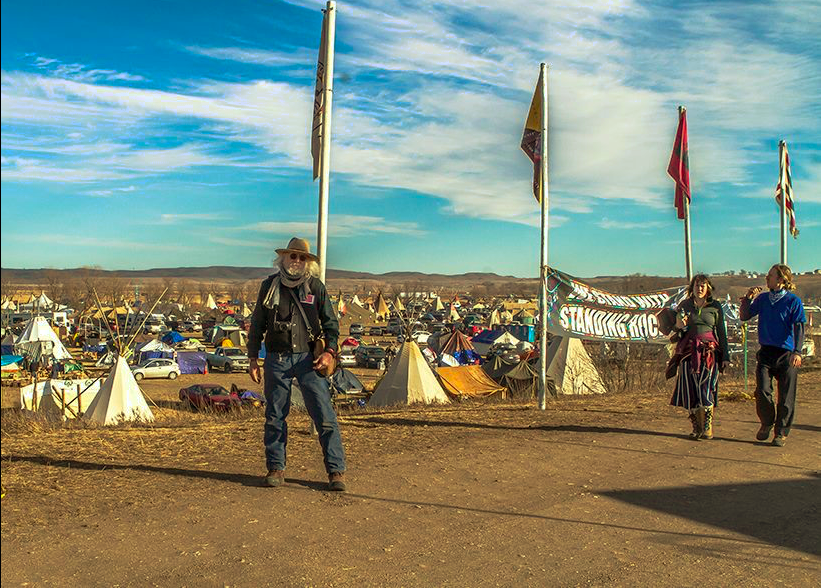
NWM 18: You went to Standing Rock during the heyday of the pipeline protests, facing challenging odds to do so. Please tell us a little about this experience.
Steven: Like all projects I take on, I have to see it for myself. It’s hard to get facts. I’ve been there, and I know people up there.
I felt disappointed in the American people. The Native American people have endured many hardships because of us. Those people were protesting for us, too, when they really had no reason to because of what we have put them through, and we couldn’t pull together as a human race to help stop this? It was beyond me.
How many treaties have been broken by our government? Let’s just say more than have been kept.
I slept in an old army sleeping bag in the front seat of my truck at night and tried to connect with the natives that I knew during the day.
I tried to gather some supplies for the people there and decided to just head up there in my old truck and see for myself. When I arrived, it was amazing. The people. The support and the help. I finagled myself a press pass and began to photograph what I saw and wondered why? I mean this was a no-brainer. As a country can’t we at least take care of this planet?
I slept in an old army sleeping bag in the front seat of my truck at night and tried to connect with the natives that I knew during the day. On the fourth day, a huge snow storm changed the forecast for the next day, and I was already really cold. So I took off and crippled my old truck home. I will never forget the look on those people’s faces and the embarrassment I felt.
NWM 19: What is one thing you would want our readers to know about you that we might not know to ask?
Steven: I’m not a rich man by no means—I live below my means—but I tell people I’m the richest poor boy I know. I have no regrets. What I’ve done in my life has made me who I am. Would I do it again knowing what I know? Yes! It’s been a hell of a ride and experience, and I wouldn’t have missed it for the world.
NWM 20: What’s next for Steven Spencer?
Steven: What’s next for me? I’m not for sure; I never know. But I can tell you it will be exciting.
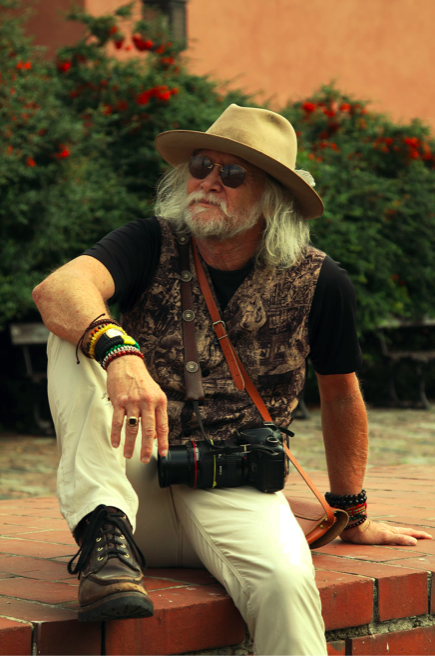
Steven Spencer
Steven Spencer owns a house in Springfield, Missouri, and lives in the world. When in Springfield, he likely will be photographing the local musicians, undertaking one project or another, or planning his next adventure. Steven’s kickass band, The Ozark Sheiks, consists of Jessica Gray Balisle (bass), Isaac Neale (drums and vocals), Tom Parker (banjo), Blaine Whisenhunt (guitar and vocals), and Steven (harmonica).
NoteWorthy Music commissioned Steven’s work for their special feature on another iconic local, Mike Smith of KSMU’s Seldom Heard Music, titled Mike Smith: A Music Seldom Heard, published simultaneously by Bluegrass Unlimited and NoteWorthy Music.
Steven says:
“What got me started [photographing ballet] was in 2012/13, a friend and I went to Panama to visit a friend that we attended Drury university with. At that time, he was dating a ballerina that danced with the Panama Ballet. We went to pick her up one afternoon, and rehearsal was still going on so we had to wait.
“I had never shot dancers in my life so I took the opportunity to photograph the rehearsal, and the images worked out! It blew me away. The choreographer from the ballet started yelling at me, and my buddy, Ish, came to my rescue and explained to her that I was a famous ballet photographer from the United States. When I showed her the images, she invited me to the performance that night to photograph backstage. I posted some of the images on my Facebook page, and a local dancer asked me if I would photograph local dancers in places that you wouldn’t normally see them when I returned. And that is how the whole thing got started.”
To learn more about Steven, visit:
https://www.stspencerphotography.com/
https://www.facebook.com/Ballet-Around-The-World-880029522088487/
Be sure to read Mike Smith: A Music Seldom Heard
You may enjoy our previous 20:20 with Tenth Mountain Division
This is our art. Please consider leaving a tip. If not, that's okay too! Enjoy and share.
We thank our sponsors for their support! Check them out!
Experience world-famous live entertainment, thrilling attractions, outdoor adventure, delicious food, and genuine Ozarks hospitality. In Branson, precious moments with your family become memories that last a lifetime. No matter what your crew enjoys doing, Branson offers activities and natural wonders that will transform your visit into an unforgettable experience. Start planning your trip at www.ExploreBranson.com
The Acoustic Shoppe in Springfield, Missouri, serves musicians and students around the world, through online and in-person sales and instruction. Their teaching studio, The Academy, is a state-of-the-art music learning program that allows students to learn at their own pace with top teachers. The shop carries high-quality instruments at every price-point, all expertly set up and ready for you to play.
The Royal is an intimate space for music, refined bar food, upscale dive-bar drinks, and non-alcoholic options. We focus on music—live performances, vinyl, and curated playlists—60's Brit-pop, new wave classics, or Latin/world music. We specialize in listening room shows. Artists pour their life into their craft and deserve our attention. Swing by for a cocktail, snack, and conversation about music.
NoteWorthy Music is a music journal and salon platform supporting the music industry and giving voice to a growing chorus of diverse artists. We are transgenre, embracing art without labels. We celebrate art and artists by honoring the genuine creation and spirit of all who create and by receiving all art with respect and kindness—and without prejudice.
The views and opinions expressed by our guests are theirs and do not necessarily reflect nor represent the views and opinions of NoteWorthy Music or its staff.
Layout and Design by Bambi Grinder






